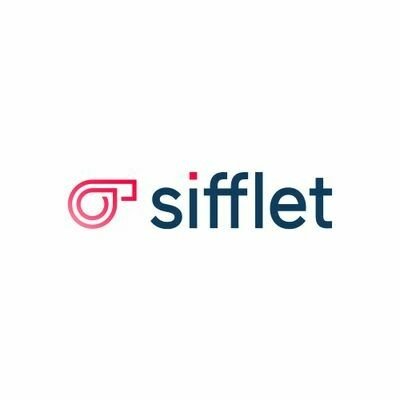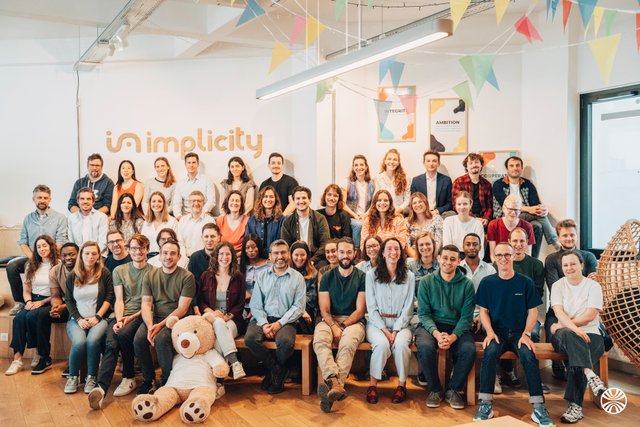Senior Backend Engineer - Integration
The position
Job description
About Sifflet
We are building the world’s best data observability platform to help companies excel at data-driven decision making.
Today, half of a data team’s time is spent troubleshooting data quality issues. Sifflet is putting an end to that. Our solution allows data engineers and data consumers to visualize how data flows between their services, define data quality checks, and quickly find the root cause of any data anomaly.
About the job
Sifflet connects to many different data sources: data warehouses (Google BigQuery, Snowflake, AWS Redshift…), business intelligence visualisation solutions (Looker, PowerBI, AWS QuickSight…), transformation/ETL tools (dbt, Fivetran, Airflow…)… For each of these data sources, we need to support all Sifflet features (catalog, lineage, monitoring…).
As each integration requires deep knowledge about the API, data model, and behaviour of each data source, Sifflet has a team dedicated to building these integrations. As a member of this team, you will:
Design and implement new integrations with data products. This often requires using and researching how each data source behaves, and then think hard about how to model it within the Sifflet platform.
Make the necessary changes to architecture and implementation to scale our data ingestion engine - some of our customers connect Sifflet to really large instances.
Add support for completely new integration types - which entails defining how they will be displayed and integrated within the Sifflet application.
Lead technical improvements to our codebase and architecture: integrating with many external services naturally results in many challenges regarding modularization, testability, and reliability.
Help improve the team standards and processes, both around technical decisions and product design.
Some projects you could be working on
Build a new model for our lineage capabilities, seamlessly merging data from various sources (such as query logs processed by our in-house SQL parser, data warehouses lineage API, or dbt models) into an easy-to-query model used as a source for both automated capabilities (such as root cause analysis) and UI elements (lineage graph).
Optimize the queries issued by our ingestion engine to reduce the cost incurred by customers when monitoring their datasources with Sifflet.
Fetch query history from all sources, and use it as an input for automated root cause analysis.
Our stack
Applications written in (modern) Java, to tap into the huge data ecosystem offered by this language; Spring Boot 3.
Other teams at Sifflet use Typescript + Vue.js (frontend) or Python. You may need to write small chunks of code in these languages too.
Infrastructure: Kubernetes (AWS EKS clusters), MySQL (on AWS RDS), Temporal for job orchestration.
Plus a few supporting services: Gitlab CI, Prometheus/Loki/Grafana, Sentry…
While not directly part of our stack, expect to gain a lot of knowledge on many products in the modern data ecosystem. The subtleties of BigQuery or Snowflake will soon be very familiar to you.
Preferred experience
More than six years of experience in a backend engineer role or equivalent. Data engineers with software development experience who want to move to a backend engineering position are also welcome.
General knowledge around some of these topics: data warehouses, data visualisation solutions, ETL pipelines… Of course, you don’t have to know everything upfront, you’ll pick up what you need on the job.
Willingness to learn Java and Spring Boot if you don’t already know this ecosystem.
You value ownership of your projects from design to production, and aren’t afraid of taking initiatives.
You want to coach other engineers to elevate the team standards
All written communication at Sifflet is in English, but the engineering team routinely uses French, so some fluency in French is required.
None of the people who joined Sifflet perfectly matched the described requirements for the role. If you’re interested in this position but don’t tick all the boxes above, feel free to apply anyway!
Recruitment process
A first call with either Benoît (Head of Engineering) or Nicolas (Integration Team Lead) to discuss the role and your ambitions (30 minutes)
One coding interview and one system design interview (1h30 each)
A short call with a product manager (30 minutes)
At this point, we generally know if we want to extend an offer, but we’re happy to organize more sessions so you can meet the team.
The whole process can be conducted remotely.
Want to know more?

Rencontrez Oriane, Software Engineer

Rencontrez Wajdi, CTO & Co founder
These job openings might interest you!
These companies are also recruiting for the position of “Software & Web Development”.
Senior Back-End Engineer
DiffuselyPermanent contractParisA few days at homeSoftware, Artificial Intelligence / Machine Learning200 employeesTechnical Lead backend - Python
FIELDBOXPermanent contractParis, BordeauxA few days at homeArtificial Intelligence / Machine Learning, IT / Digital60 employeesSoftware Architect
ImplicityPermanent contractParisA few days at homeSalary: €80K to 85KSoftware, Artificial Intelligence / Machine Learning100 employeesFullstack Engineer – Frontend Specialist
QantevPermanent contractParisA few days at homeArtificial Intelligence / Machine Learning, FinTech / InsurTech46 employeesFullstack Software Engineer - Dataiku Cloud - Onsite or Remote (FR, UK, DE, NL)
DataikuPermanent contractParisNo remote workSoftware, Artificial Intelligence / Machine Learning1,000 employeesScientific Software Engineer - Computational Chemistry
AQEMIAPermanent contractParisA few days at homeArtificial Intelligence / Machine Learning, Pharmaceutical / Biotech60 employees














